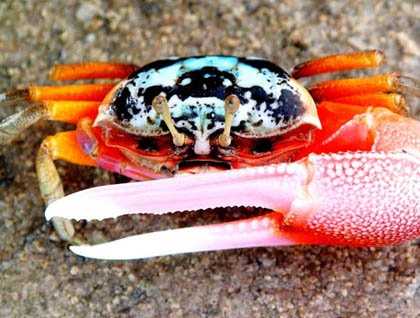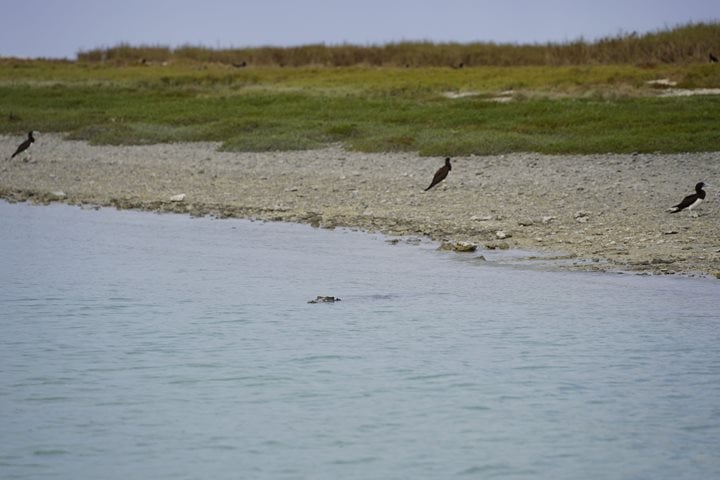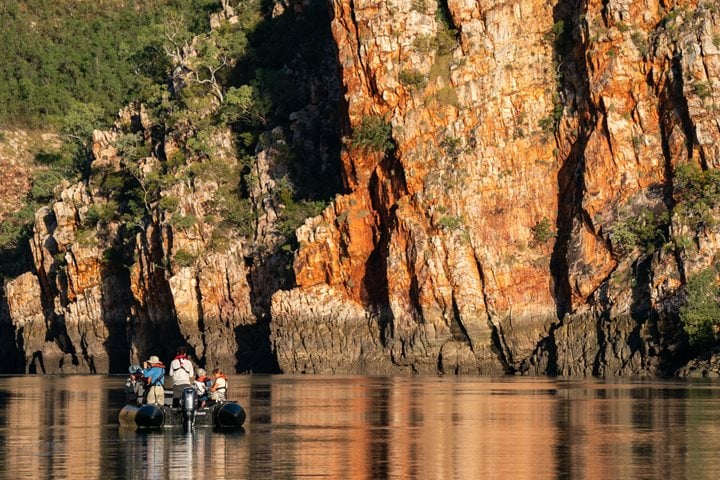As the National Geographic approached Vansittart Bay, we were welcomed by a beautiful morning and peaceful calm seas. We stared in wonder at the magnificent glassy waters of the bay, with the knowledge that this was the beginning of a special and stimulating day.
It was time to visit the C-53 plane wreckage, a representative of World War II history, located at the Anjo Peninsula. On February 1942, during a return flight from Perth to Broome, the pilot made a navigational error and running out of fuel, crash-landed on a salt pan. Fortunately, no lives were lost and all crew members were rescued. During our walk to the plane site, over the salt pan, we had the opportunity to see some of the secretive critters inhabiting this interesting ecosystem. Easily recognized by their distinctively asymmetric claws, Fiddlers crabs (Uca signata), were observed all over the area, displaying their enlarged cheliped in an attempt to defend their territory and attract females. These little crabs play an important role in the preservation of the wetland environments by sifting through the sands, and aerating the substrate.
At lunch, a delicious meal was savoured on the sun deck, and after a short break we headed on our Zodiac expedition destined to Jar Island, where we had the exceptional opportunity to see the mysterious and ancient Bradshaw or Gwion Gwion rock art. This picturesque and rugged island holds many secrets. Through a short and accessible walk on a sandstone pathway, we were fortunate enough to discover and contemplate a few of them. We visited three main rock art galleries, where different styles of rock art can be found. Bradshaw figures are the most extensive primitive rock drawings in the world. Depicting elongated human figures dissimilar from Aboriginal art found throughout the Kimberley, the Bradshaw figures were named after the English pastoralist and explorer, Joseph Bradshaw. He made the discovery in 1891 whilst traversing the Prince Regent River area, searching for suitable pastures. The Bradshaw figures are usually mulberry in colour and appear to be impregnated into the rock rather than painted on. They are very detailed depicting males in ceremonial dress. On occasion, pronounced breasts on either side of the figure identify rarely sighted female figures. Numerous tassel shaped ornaments are evident depicting hair. Dating the rock art has proved difficult and controversial. In 1946, a technique using optically stimulated luminescence to date fossilized mud wasp nests that were built over Bradshaw figures showed the nests to be 17,000 to 22,000 years old. This finding provides a minimum age dating back to the last ice age. Explorer and art examiner Grahame Walsh systematically documented the paintings and recorded the legends and historic incidents, relevant to significant rock art regions of Australia.
Unfortunately the time arrived to return to the National Geographic Orion, but this special day definitely piqued our interest about this enigmatic and mysterious and rock art. We all felt fortunate enough to experience another irreplaceable and unique day in The Kimberley.







